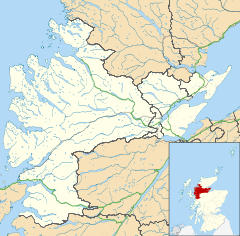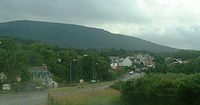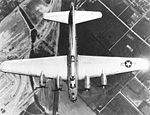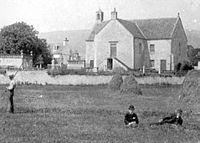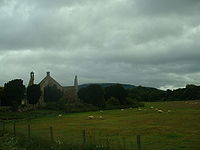
Evanton
Background Information
SOS Children made this Wikipedia selection alongside other schools resources. Do you want to know about sponsoring? See www.sponsorachild.org.uk
Coordinates: 57.663°N 4.338°W
| Evanton | |
| Scottish Gaelic: Baile Eòghainn | |
 The main street from opposite the Novar Arms |
|
|
|
|
| Population | 1,105 (Settlement) 1678 (Set. Zone) |
|---|---|
| OS grid reference | NH606661 |
| Council area | Highland |
| Lieutenancy area | Ross and Cromarty |
| Country | Scotland |
| Sovereign state | United Kingdom |
| Post town | DINGWALL |
| Postcode district | IV16 |
| Dialling code | 01349 |
| Police | Scottish |
| Fire | Scottish |
| Ambulance | Scottish |
| EU Parliament | Scotland |
| UK Parliament | Caithness, Sutherland and Easter Ross |
| Scottish Parliament | Ross, Skye and Inverness West |
|
|
Evanton ( Scottish Gaelic: Baile Eòghainn or Scottish Gaelic: Am Baile Ùr) is a large village in Easter Ross, in the Highland Council Area of Scotland. It lies between the river Sgitheach and the Allt Graad, is 24 kilometres (15 mi) north of the city of Inverness, some 6.5 km (4.0 mi) south-west of Alness, and 10 km (6.2 mi) north-east of Dingwall. The village has a dozen or so streets, the main one being Balconie Street (B817). It has been described by analysts at Highland Council as a "commuting settlement", because most of the inhabitants work in other areas of Easter Ross and the greater Inverness area.
The current town was founded in the early nineteenth century by Alexander Fraser of Inchcoulter/Balconie who named it after his son Evan, but the core of the village buildings date from the Victorian era. Evanton has several tourist attractions, including the Fyrish monument, the Black Rock Gorge and the ruined church of Kiltearn lying near the river Sgitheach as it flows into the Cromarty Firth, as well as other miscellaneous natural, historical and archaeological attractions in the surrounding area. There are two Churches, one Church of Scotland and one Free Church of Scotland. There is one primary school, but the nearest high schools are in Dingwall and Alness. It has one convenience store, a post-office, two public inns (Balconie Inn and Novar Arms) and several other miscellaneous businesses. The village hall is named the 'Diamond Jubilee Hall.'
Kiltearn background
Evanton lies within the ancient parish of Kiltearn ( Gd: Cill Tighearna), within the medieval lands known as Ferindonald (Fearann Dhòmhnaill) in the heart of the old "Earldom" of Ross. Traditionally, Ferindonald is supposed to be derived from a grant of King Máel Coluim III to Donald Munro of Foulis (Domhnall mac an Rothaich), the legendary progenitor of Clan Munro. However, there is no evidence for the existence of this family until the fourteenth century.
Evanton is in close proximity to the site of Balconie Castle, an old seat of the Mormaers and Earls of Ross. By the early modern period, the area was dominated by the Munros of Foulis (Foghlais), who had their Foulis Castle just a few kilometres away. Indeed, the latter began to bury their family at Kiltearn after 1588. The Cille place-name in Kiltearn tells us that there had been a very ancient Gaelic church near Evanton, like all Cille place-names, founded before 800. The current Gaelic name Cill Tighearna ("Church of the Lord") is probably a corruption of an older form, both because the name formation is unusual in being dedicated to the Lord Himself, and because the form given in 1227 is Kiltierny, suggesting some kind of connection to Tigernach in Ireland. Other suggestions have included a dedication to St Ternan. The church lay next to the lordly residence of Balconie. By the later Middle Ages, Balconie was one of the five lordships of Ross, as well as an individual seat of the Earls of Ross. Place-name evidence suggests that the site may once have been a Pictish residence. A charter granted by Aodh, Earl of Ross in 1281 records the name Petkenny, but a charter of 1333 refers to a location called Balkenny. The development of the name Pitlochry, where Pictish Pit- is replaced by Gaelic Baile, suggests the names are the same, but the great early twentieth century toponymist William J. Watson was doubftful.
History
In Kiltearn there had been a settlement, an old ferm toun known as Drummond (Drumainn), near the location of Evanton, and several lordly residences, such as Foulis, Novar and Balconie Castle. In 1807, the local landowner Alexander Fraser was clearing his estates to make way for sheep, and founded Evanton as a planned settlement for the relocated residents, modestly naming it after his son. To this day, in the words of one historian, Evanton "remains today an attractive example of a well planned, regularly laid out estate village". The Reverend Thomas Munro expressed similar sentiments in the 1840s, when he wrote that "the village was built on a waste of land, and differs from all others in the country by its regular and neat appearance". The village suffered from the severe famine that plagued the Highlands in 1840s. There was a riot in the village in 1846, because the authorities continued to export grain despite the failure of the previous year's potato crop; similar riots occurred in Rosemarkie, Balintraid and Avoch. In 1847, there was near starvation in the village, and the villagers managed to maintain themselves on turnips. However, the village population recovered; by the beginnings of the First World War, Evanton had taken much of its current physical shape, and at this point in time contained businesses as diverse as a tobacconist and a bicycle shop, both of which have subsequently disappeared.
In the twentieth century, the village enjoyed a variety of fortunes. The distillery closed in 1926 (see below) and one of the most important historical locations in Easter Ross, Balconie Castle, was demolished in 1965. It had been an old seat of the Earls of Ross, but by the 1960s the owner could not afford to repair the dry rot. There was a RAF airfield constructed near Evanton in 1922, on Alness Bay. It was first known as the "Novar Base", because of its location on the Novar Estates, then later as HMS Fieldfare. It was serviced from Leuchars, and was used by the aircraft from the nearby Home Fleet base of Invergordon. The largest aircraft to have landed there was a USAAF B17. On Empire Day, 1939, RAF bases all over the United Kingdom were opened to the public, and the Evanton Aerodrome was the most northerly location to participate, attracting 9000 visitors. The base closed in the 1970s. However, the oil boom of the 1970s caused radical expansion of the village. It has been growing steadily ever since.
Demographics
The modern village is on average a little younger than the Highland region in general. The population of Evanton varies depending on how it is calculated. The Evanton "Settlement Zone" is different from the Evanton "Settlement", and the former is of course larger. There are 671 households and 1678 inhabitants in total in the Evanton-zone. Evanton-settlement on its own however has only 1105 inhabitants. The population in both cases though is growing steadily, and the 1990s saw a moderate increase of 8.12% for the zone, rising from 1552 to 1678; and 10.72% for the settlement on its own, rising from 998 to 1105. Over two thirds of the houses in the zone are owner-occupied. Roughly 16.4% or 275 people who live in Evanton-zone were born outside of Scotland, almost always coming from England.
Geography
Evanton is more or less enclosed to the north-east and the south-west by two rivers, the Allt Graad and the River Sgitheach. The Allt Graad, sometimes called the River Glass, is a picturesque river that flows from Loch Glass, near Ben Wyvis, for 9 km (5½ miles) until it passes the northern end of the village, and empties into the Cromarty Firth. However, some 3 km (1.9 mi) before it reaches the Cromarty Firth, it passes through the Black Rock Gorge. The latter is a few hundred metres in length and reaches 36 metres (120 ft) in depth. In April, 2004, ten days of filming took place in the area for the movie Harry Potter and the Goblet of Fire and the Gorge is the setting for the scene where Harry is chased by a dragon. The River Sgitheach, sometimes written as Skiack or Skiach, is not as large a river as the Allt Graad and can run low in the summer. It flows from the mountains of inland Ross and is complemented by numerous other streams until it passes several waterfalls before flowing past the southern end of the village, and the northern end of the old settlement of Drummond, into the Cromarty Firth about 1 km from the mouth of the Allt Graad.
Economy
A significant but small percentage of people have employment in the oil industry owing to the proximity of oil rigs on the Cromarty Firth. Other locally significant industries include forestry, tourism and catering. A significant number of people work in larger nearby localities, such as Inverness, Dingwall, Alness and Invergordon, which is why only 13% of households in the zone own no car. 10.4% of the population of the zone are self-employed, and 28% economically inactive, roughly corresponding with the Highland averages. There are also two hotels and two bars, which soak up much of the tourist income that the town generates.
There had been a distillery in the Evanton area of the Kiltearn parish as early as the eighteenth century, its existence being reported by Harry Robertson, the author of the late eighteenth century Kiltearn section of the late eighteenth century 1st Statistical Account. The Glen Skiack distillery opened in 1896 and only ever produced a relatively small amount of Whisky. However, the effects of the U.S. Prohibition law, which damaged the income of all Scottish distilleries, proved too much for Glen Skiack, and the operation was forced to close in 1926. The building itself was demolished in 1933.
Transport
In 1860, the Highland Railway decided to construct a railway line going from Inverness through Easter Ross. The line was completed by 1862, and the following year, on 23 May 1863, Evanton gained its own railway station. However, the station was called Novar, and was not renamed "Evanton" until 1937. Sadly for the local economy, the station was closed in June 1960. The platforms remain there to this day, but the signal posts have been destroyed. The Inverness to Thurso railway line, known today as " Far North Line", still passes by the seaward side of the town, and the trains can still be heard from a great distance. The nearest train station is Alness.
The A9, the great road connecting Edinburgh with Inverness and the far north, once ran through Evanton, on the path of Balconie Street. However, a bypass was created as part of a general scheme to shorten the journey between Inverness to Invergordon. This reduced the amount of traffic going through the village, but decreased the revenue available to local businesses. The road also cut through much of the farmland of the zone, distorting the shape of the fields. This was compounded by the closure of the filling station in the village. For those who do not have cars, the only means of transport is either by foot or by the #25 bus service operated by Stagecoach. Recently, the express service running from Inverness to Dornoch began to stop in Evanton. Now residents can travel from and to Inverness without the long diversion through Dingwall, making it easier to work in the city of Inverness without personal transport.
Culture
In 1845, the local minister wrote that "the language generally spoken is an impure form of Gaelic, but it is rapidly losing ground" and that "in Evanton, both English and Gaelic are spoken indifferently". The minister wrote that the people, especially the children, learned English with ease after they had learned to write Gaelic. The minister also gave some reasons why the people were keen to learn English, telling us that "English being the language universally spoken by the higher classes, the mass of the people attach a notion of superior refinement to the possession of it". Half a century previously, Harry Robertson had praised the spirit of one watchmaker in the region, but added "it is a pity that he can hardly read nor write, and hardly speaks English".
Today, one can see Gaelic written on the walls of the parish church, but the language has effectively died out, and English is totally dominant. Nevertheless, there are still some 72 residents (4.3%) of the village who know the language. The village is also a big location on the Highland folk-circuit, and enjoys a vibrant musical culture in the Gaelic tradition. It is a regular practice for local musicians to meet in the Balconie Inn, one of the two licenced establishments of the town, and engage in evening-long sessions. Many prominent musicians on the Celtic music scene have visited, including Eilidh Steel and Dougie MacLean.
